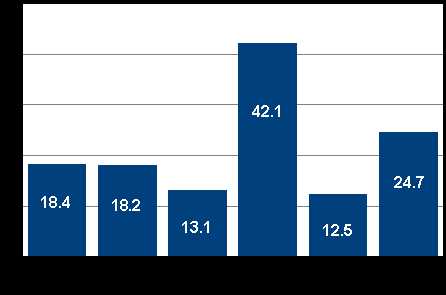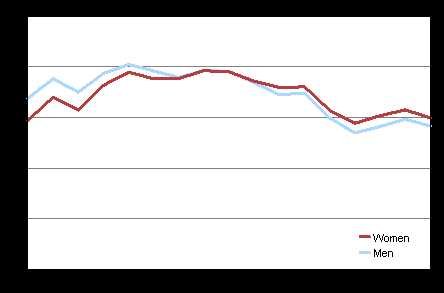|
Fri, 15 Mar, 2013 12:57:26 AM FTimes Report, March 15
 Source Statistics Finland The voters who casted votes in advance in the last municipality elections were mostly pensioners, according to the Statistics Finland.
The report released here on Thursday said that 49.8 percent of the total advance votes were the pensioners in the municipality elections in 2012.
The data also said that 42.1 per cent of the total pensioners casted votes in advance and the number of the total advance voters was 24.7 percent of the people eligible for voting.
The ratio of the advance votes among other groups was much lower compared to the pensioner group where only 18.4 per cent of employed persons and 18.2 per cent of unemployed persons casted votes in advance.
The data has been prepared based on the statistics of the Municipal elections 2012.
The report showed that the probability of advance voting grew primarily with age. Persons entitled to vote aged 65 years to 74 years were the most active advance voters, as 47.0 per cent of them cast their vote in advance. The corresponding percentage was 41.6 among those aged over 75. Younger age groups voted less often in advance. Among persons aged between 18 to 24 was 9.5 percent voted in advance, 12.6 per cent of those aged 25 to 44, and 26.3 per cent of those aged 45 to 64.
Advance voting turnout varied according to the size of the municipality. In small municipalities with fewer than 2,000 inhabitants, 36.8 per cent of persons entitled to vote cast their vote in advance, while in municipalities with over 100,000 inhabitants this share remained at 21.5 per cent.
In small municipalities, young people also voted in advance clearly more often than in large ones. With respect to family status, advance voting was lowest among young adults living at home and highest among people without a family as well as married and cohabiting. Married or cohabiting persons aged 65 or over were the most active at voting in advance. Advance voting was also more probable among persons with higher education.
Persons with foreign background voted in advance less often than persons who had no foreign background. The probability of advance voting grew with age for persons entitled to vote with foreign background as well. Older age groups had most differences in advance voting turnout of persons with or without foreign background. Just 11.4 per cent of persons aged 45 to 64, whose both parents were born abroad, voted in advance. Of persons in the same age group with one parent who was born abroad, 25.6 per cent voted in advance and 27.1 per cent of those with Finnish background.
In the Municipal elections 2012, the voting turnout of both women and men fell lower than in the previous elections. The last time women's voting turnout has remained below 60 per cent was in the 2000 Municipal elections and before that in the 1950 Municipal elections. Voting turnout went down for both sexes in all constituencies and was higher in rural municipalities than in semi-urban or urban municipalities.

Source Statistic Finland
The growth in the shares of female candidates, votes cast for women and elected female councillors that had continued for decades, halted in the Municipal elections 2012. The shares varied greatly by municipality and party.
The share of female candidates (38.8%) fell from the previous elections in all constituencies apart from Lapland and was over 40 per cent only in the constituencies of Helsinki, Uusimaa and Varsinais-Suomi.
Female candidates gained 40.7 per cent of all votes cast. The Green League was the only party where women gained over one-half (62.7%) of the votes cast for the party. Relative to the share of female candidates, women gained the most votes in the constituencies of Helsinki and Uusimaa, and the least in the constituency of Kymi. Women fared better in urban municipalities than in semi-urban or rural municipalities. In rural municipalities, women's share of votes cast (35.2%) was clearly smaller than that of female candidates (38.3%). In urban municipalities the situation was the opposite.
As typical for Municipal elections, the share of elected female councillors, 36.2 per cent, was lower than the share of votes cast for women on the level of the whole country. Women gained a majority to the municipal councils of six municipalities. In the 2008 Municipal elections, thirteen female-majority councils were elected. The share of elected female councillors and the share of votes cast for women were divided similarly according to municipalities' degree of urbanisation as the share of candidates: in urban municipalities relatively more women gained votes and got elected than in semi-urban or rural municipalities.
More News
|
|
Finland Times
| Thursday, 27 November, 2025 |

